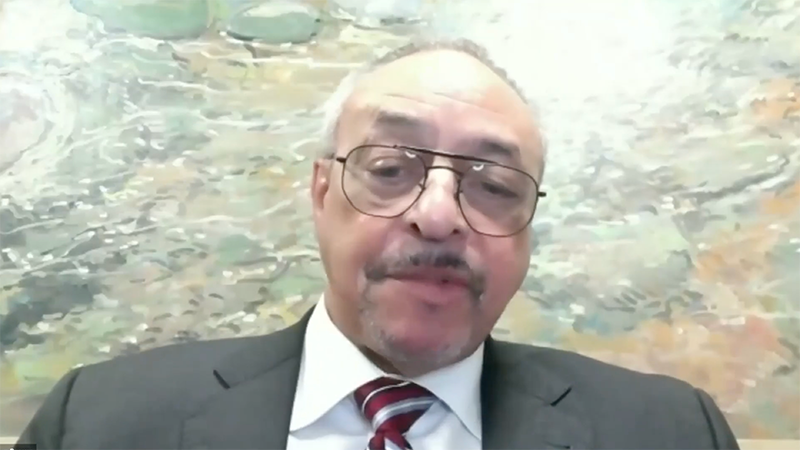
Opinions expressed in AGB blogs are those of the authors and not necessarily those of the institutions that employ them or of AGB.
AGB recently hosted a webinar panel discussion about the findings from the Top Strategic Issues for Boards 2024-2025 report. The webinar focused on several themes from the report: business model innovation, digital transformation, enhancement of student success, the student experience, and campus inclusion. This is the first in a series of blog posts that explore these critical issues, beginning with business model innovation and digital transformation.
Higher education institutions face new opportunities and challenges to the way they traditionally operate. Our conversation illustrated that college, university, and system governing boards must remain focused on their organization’s mission when responding to disruption, whether it be financial hardships, technological change, or students’ needs. We advise campus leaders to serve their students by taking a considered, principled approach to innovation and avoiding kneejerk reactions to new tools and strategies that do not suit their organization’s mission. The newest technology, for example, may not be appropriate for your institution or system.
Below are some excerpts from the webinar, along with some of our additional recommendations for higher education governing boards.
What does effective board leadership look like in the context of business model innovation and digital transformation?
New tools provide opportunities for business model innovation and digital transformation, but boards and chief executives must ask questions, educate themselves, and focus on determining the resources that are appropriate for their institutions.
Carlton Brown, senior consultant at AGB and executive search consultant at AGB Search, urged boards to help their chief executives think through what outcomes are most appropriate for their institution. Chasing the latest “shiny object” can result in out-of-control costs and unintended outcomes, he warned. This is an area in which institutional leaders should directly solicit the business knowledge of board members. Board members’ expertise can assist institutional leaders in defining the appropriate institutional business model, effectively utilizing cost/benefit analyses, interpreting programmatic and sector profit-and-loss statements, and addressing deferred maintenance, among other issues.
Whatever an institution does, the new digital tools it adopts must have an outcome that is predictable and manageable. New tools should make everyone’s work easier, faster, better, more consistent, and more responsive, not create a burdensome expense that does not meet students’ needs. Furthermore, boards should ask questions about the costs of maintaining digital tools and encourage presidents to learn from their colleagues at other institutions who have succeeded in solving the same problems, said Brown.
Barbara Gellman-Danley, president of the Higher Learning Commission, noted that institutions should be diligent in their technology-purchasing decisions and avoid making “golf course deals.” Boards, presidents, and other campus leaders should understand that the costs of maintaining a new technology and training appropriate staff may be much more than the initial price of the system. As with any decision in higher education, leaders need to do research and figure out their goals first. Boards must be creative and open to change—trustees should always be learning and willing to bring in experts who are able to keep the board informed about current best practices and available options, she added.
R. Barbara Gitenstein, a senior fellow and senior consultant for AGB, said that conversations about an institution’s business model are complex and should involve the board, president, faculty, and staff. Campus leaders should resist the urge to think that adding or expanding certain academic programs can solve all their institution’s problems—since that is probably not the case. In terms of new academic programs, those “shiny objects” that seem the most attractive are often expensive. Colleges and universities should consider carefully both the costs of implementing and of maintaining those additional programs.
How can institutions foster business model innovation that is meaningful and not just initiatives that mirror the innovations adopted by peers or aspirational peers?
Higher education institutions should pursue innovation in a way that is diligent and focused on their particular missions.
Gellman-Danley emphasized that institutions must remember their enunciated missions and student populations—not follow fads. Leaders must focus on identifying what will work well for their own institution, not just grab a ton of ideas out of the ecosystem or try to keep up with decisions by their peers. As part of this, organizations should have a thorough business plan and properly vet any third-party partnerships. Gitenstein agreed that boards must help executive leadership focus innovation on the specifics of the institution, cautioning that not every innovation will be appropriate for every type of institution, although every institution must be innovative.
Brown added that while it is always important to review innovations adopted by peers and others, boards need to help their institutions develop innovations and efficiencies responsive to their own missions and visions. They should help leaders determine what actions and business processes are unique and central to the mission, vision, and particular culture of their institution or system and sort out those that are candidates for outsourcing, collaboration, or affiliation agreements.
How can boards foster a collaborative relationship with faculty and senior leadership during business model innovation and digital transformation, and why is this partnership critical for success?
Boards must engage with campus leadership to understand how the institution accomplishes its central mission: supporting students.
Brown noted that the best collaborations for innovation and transformation are often the products of established relationships with faculty, staff, students, and alumni. Establishing a culture of ongoing dialogue and collaboration, as well as recognizing unique aspects of the local community culture, are key to successful transformations.
Gitenstein suggested that boards get to know the leadership of the important governance bodies at the institution. This will help trustees become part of creating a collaborative spirit in guiding the institution into the future because shared governance is just that: It is shared. While the boards are the institution’s fiduciaries, they must also be attentive to the importance of engaging the faculty, staff, and students in any change process. In particular, the faculty must “buy into” major change. The reason is simple—it is the faculty that delivers the curriculum, and it is the curriculum that defines the institution.
Gellman-Danley advised boards to go through their institution’s chief executive to invite members of the faculty and senior leadership to retreats and deep dive discussions. For example, boards may incorporate a “showcasing” of new ideas from faculty and senior leadership into board meetings so the board may hear directly about the innovations underway and planned.
Mary Papazian, AGB’s executive vice president, said that engaging with a range of stakeholders transparently about future visions builds trust and allows for invaluable feedback. Effective leadership in today’s higher education landscape requires boards to adopt an adaptive approach, embracing collaboration, valuing change, and addressing community needs in ways designed to enhance student success and institutional sustainability. Boards, however, must also provide fiduciary oversight in a way that recognizes the chief executive is the “captain of the ship” who manages the operations of the institution, she noted.
Conclusion
Effective college and university board leadership in the context of business model innovation and digital transformation is marked by agility and strategic foresight, always grounded in the needs of the educational mission of the institution or system the board is responsible for guiding. Prioritizing diversity of thought fosters collaboration among faculty, industry experts, and student representatives, enabling the exploration of innovative funding and new avenues for program development. Boards must also promote a culture of digital literacy among themselves and institutional leaders, investing in current technologies while encouraging adaptability and experimentation within relevant educational frameworks. Staying attuned to industry trends and employing data analytics can inform critical decision-making strategies, ensuring institutional relevance and sustainability, Papazian added.
Mary Papazian is AGB’s executive vice president.
Carlton Brown is a senior consultant at AGB and an executive search consultant at AGB Search.
Barbara Gellman-Danley is president of the Higher Learning Commission.
R. Barbara Gitenstein is a senior fellow and senior consultant at AGB.
RELATED RESOURCES

Reports and Statements
AGB Board of Directors’ Statement on Innovation in Higher Education

Trusteeship Magazine Article
Fostering Change in Higher Education







